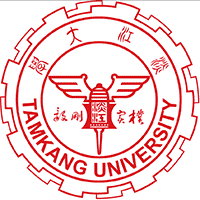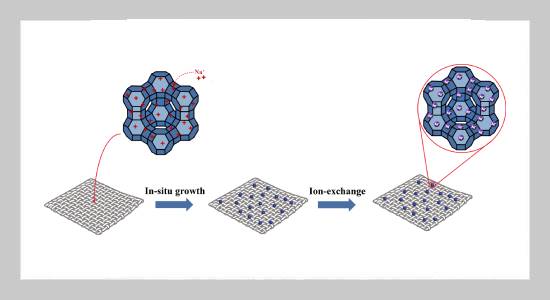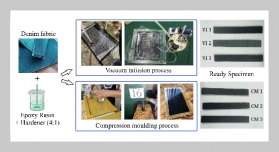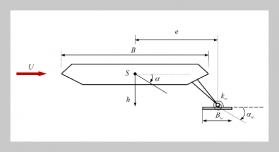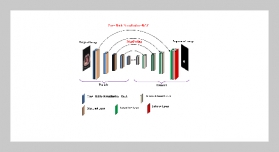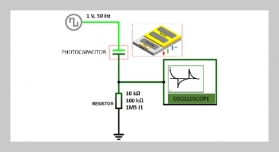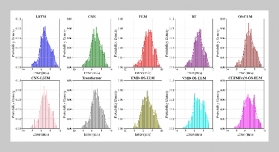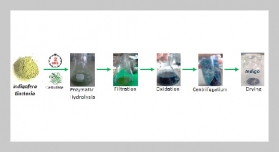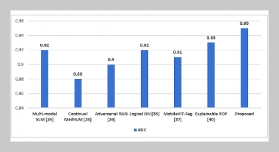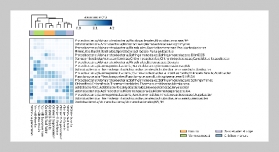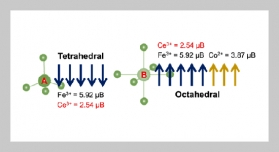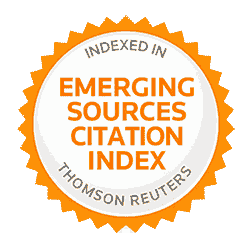- [1] D. Xu, M. Yang, Z. Luo, Z. Lian, Y. Zhou, W. Geng, W. Kong, and J. Li, (2024) “Ultrasonic-assisted preparation of zinc oxide for bacteria inhibition: influence of dispersants and antibacterial mechanism" Applied Physics A 130: 773. DOI: 10.1007/s00339-024-07949-y.
- [2] N. K. Madipoju, S. J. Khanam, G. Sunkari, S. M. Vasamsetti, V. Divyasri, V. Morampudi, R. N. Savu, M. Banavoth, S. Banne, I. Hasan, and P. Kalakonda, (2025) “Bimetallic zinc-silver nanocomposites for superior antimicrobial efficacy" Applied Physics A 131(2): 153. DOI: 10.1007/s00339-025-08289-1.
- [3] S. Some, R. Mondal, D. Mitra, D. Jain, D. Verma, and S. Das, (2021) “Microbial pollution of water with special reference to coliform bacteria and their nexus with environment" Energy Nexus 1: 100008. DOI: 10.1016/j. nexus.2021.100008.
- [4] O. V. Obayomi, D. C. Olawoyin, O. Oguntimehin, L. S. Mustapha, S. O. Kolade, P. O. Oladoye, S. Oh, and K. S. Obayomi, (2024) “Exploring emerging wa ter treatment technologies for the removal of microbial pathogens" Current Research in Biotechnology 8: 100252. DOI: 10.1016/j.crbiot.2024.100252.
- [5] W. H. Organization. Drinking-water. Web Page. 2023.
- [6] U. Nations. The17Sustainable Development Goals. Web Page.
- [7] A. A. Vasconcelos, T. Len, A. D. de Oliveira, A. A. Costa, A. R. Souza,C.E.Costa,R.Luque,G.N.Rocha Filho, R. C. Noronha, and L. A. Nascimento, (2023) “Zeolites: A Theoretical and Practical Approach with Uses in (Bio)Chemical Processes" Applied Sciences 13(3): DOI: 10.3390/app13031897.
- [8] W. Yan, Y. Li, F.-S. Xiao, Z. Liu, and J. Yu, (2024) “The Future of Zeolites" Chemistry of Materials 36(15): 7103–7105. DOI: 10.1021/acs.chemmater.4c01675.
- [9] N. T. T. Phuong, Q. T. Le Nguyen, H. H. Lam, V. D. Nguyen, H. D. Ngo Tran, and N. Quang Long, (2022) “Enhancement Of CO2 Adsorption By Introducing Meso pores Into FAU Zeolite Using Acid-Base Leaching" Journal of Applied Science and Engineering 26(6): 791 798. DOI: 10.6180/jase.202306_26(6).0005.
- [10] H. G. Quynh, H. V. Thanh, N. T. T. Phuong, L. H. Hung, N.V. Dung, andN.Q.Long,(2023) “Magnetite supported on different zeolites as highly efficient heterogeneous Fenton catalysts for methylene blue removal" IOP Conference Series: Earth and Environmental Science 1226(1): 012015. DOI: 10.1088/1755-1315/1226/ 1/012015.
- [11] S. P. Manjunath, P. Binnal, S. Rajashekhara, and J. Patil, (2020) “In-situ synthesis of ZSM-5 to form SCR catalyst membrane and Modeling using COMSOL Multi physics" Journal of Applied Science and Engineering 23(4): 723–730. DOI: 10.6180/jase.2020_23(4).0017.
- [12] N. T. T. Phuong, N. M. Thuan, N. T. M. Linh, N. Van Dung, N. T. H. Duong, and N. Q. Long, (2024) “Effects of organic acids on microwave-assisted leaching for mesopore generation in FAU zeolite" Applied Physics A130(10): 734. DOI: 10.1007/s00339-024-07879-9.
- [13] N. M. Thuan, N. T. M. Linh, N. T. T. Phuong, N. T. H. Duong, N. M. Hung, P. T. Tuyet, N. Van Dung, and N.Q.Long,(2024)“Ethanolamine-modified zeolite– Chitosan beads as new adsorbents for carbon dioxide capture and crystal violet removal" Case Studies in Chemical and Environmental Engineering 10: 100917. DOI: 10.1016/j.cscee.2024.100917.
- [14] C. Onyutha, E. Okello, R. Atukwase, P. Nduhukiire, M. Ecodu, and J. N. Kwiringira, (2024) “Improving household water treatment: using zeolite to remove lead, f luoride and arsenic following optimized turbidity reduction in slow sand filtration" Sustainable Environment Research 34(1): 4. DOI: 10.1186/s42834-024-00209-x.
- [15] L. Quynh, L. Quang, N. Tam, and N. Quang Long, (2023) “Preparation of PVA/Chitosan/Zeolite Composite and its Antibacterial Activity for Water Treatment" Advances in Science and Technology 122: 41–47. DOI: 10.4028/p-7m1j4w.
- [16] C. Chen, G. Wang, and X. Xu, (2021) “Preparation of zeolite-cellulose composites for water disinfection" Jour nal of Porous Materials 28(5): 1459–1468. DOI: 10.1007/s10934-021-01096-y.
- [17] B .Kwakye-Awuah, C. Williams, M. A. Kenward, and I. Radecka, (2008) “Antimicrobial action and efficiency of silver-loaded zeolite X" Journal of Applied Microbiology 104(5): 1516–1524. DOI: 10.1111/j.1365-2672. 2007.03673.x.
- [18] J. Cui, R. Yeasmin, Y. Shao, H. Zhang, H. Zhang, and J. Zhu, (2020) “Fabrication of Ag+, Cu2+, and Zn2+ Ternary Ion-Exchanged Zeolite as an Antimicrobial Agent in Powder Coating" Industrial & Engineering Chemistry Research 59(2): 751–762. DOI: 10.1021/acs.iecr.9b05338.
- [19] F. Zou, S. Cao, Y. Luo, Z. Liu, X. Zhao, J. Hu, R. Liu, L. Cao, B. Liang, Z. Wang, and Z. Weng,(2023) “Antibacterial capability of microstripe structure on silver-doped Ti6Al4V by laser interference direct writing" Applied Physics A 129(11): 797. DOI: 10.1007/s00339-023 07019-9.
- [20] A. Tsompou, P. Falkman, A. Terry, and V. Kocher bitov, (2024) “A structural investigation on the interactions of cotton fabric cellulose with olive oil and water" Carbohydrate Polymer Technologies and Applications 8: 100590. DOI: 10.1016/j.carpta.2024.100590.
- [21] M. Eyvaz, E. Gürbulak, S. Arslan, and E. Yüksel.“Tex tile Materials in Liquid Filtration Practices: Current Status and Perspectives in Water and Wastewater Treatment”. In: Textiles for Advanced Applications. Ed. byB. Kumar and S. Thakur. Rijeka: Intech Open, 2017. DOI: 10.5772/intechopen.69462.
- [22] S. Mintova, V. Valtchev, B. Schoeman, and J. Sterte, (1996) “Preparation of zeolite Y-vegetal fiber composite materials" Journal of Porous Materials 3(3): 143–150. DOI: 10.1007/BF01134025.
- [23] G. S. Lee, Y. J. Lee, K. Ha, and K. B. Yoon, (2001) “Preparation of Flexible Zeolite-Tethering Vegetable Fibers" Advanced Materials 13(19): 1491–1495. DOI: 10.1002/1521-4095(200110)13:193. 0.CO;2-N.
- [24] G. F. Larsen, D. Vu, and M. Marquez-Sanchez. Stable zeolite/cellulose composite materials and method of preparation. Patent. 2002.
- [25] M.-T. Ashraf, A. A. AlHammadi, A. M. El-Sherbeeny, S. Alhammadi, W. Al Zoubi, Y. G. Ko, and M. R. Abukhadra, (2022) “Synthesis of cellulose fibers/Zeolite A nanocomposite as an environmental adsorbent for organic and inorganic selenium ions; Characterization and advanced equilibrium studies" Journal of Molecular Liquids 360: 119573. DOI: 10.1016/j.molliq.2022. 119573.
- [26] L. Yu, X. Shang, H. Chen, L. Xiao, Y. Zhu, and J. Fan, (2019) “A tightly-bonded and flexible mesoporous zeolite-cotton hybrid hemostat" Nature Communications 10(1): 1932. DOI: 10.1038/s41467-019-09849-9.
- [27] K. Baghdad and A. M. Hasnaoui, (2020) “Zeo lite–cellulose composite membranes: Synthesis and ap plications in metals and bacteria removal" Journal of Environmental Chemical Engineering 8(4): 104047. DOI: 10.1016/j.jece.2020.104047.
- [28] X. Chen, L. Yu, S. Zou, L. Xiao, and J. Fan, (2020) “Zeolite Cotton in Tube: A Simple Robust Household Water Treatment Filter for Heavy Metal Removal" Scientific Reports 10(1): 4719. DOI: 10.1038/s41598-020-61776-8.
- [29] J. Sommana, S. Narakaew, S. Utara, S. Thungprasert, T. Promanan, and A. Chaisena, (2025) “Surface modification of cotton fabric by kaolin-derived zeolite N to enhance efficient removal of particulate matter" Materi als Chemistry andPhysics329: 130073. DOI: 10.1016/j.matchemphys.2024.130073.
- [30] N.E. Zafeiropoulos. “3- Engineering the fibre– matrix interface in natural-fibre composites”. In: Proper ties and Performance of Natural-Fibre Composites. Ed. by K. L. Pickering. Woodhead Publishing, 2008, 127–162. DOI: 10.1533/9781845694593.1.127.
- [31] A. Ahmadon, L. S. M. Nazir, Y. F. Yeong, and S. Sab din, (2018) “Formation of pure NaX zeolite: Effect of ageing and hydrothermal synthesis parameters" IOP Conference Series: Materials Science and Engineering 458(1): 012002. DOI: 10.1088/1757-899X/458/1/012002.
- [32] A. Nouri, M. Jafari, M. Kazemimoghadam, and T. Mohammadi, (2012) “Effects of Hydrothermal Parameters on the Synthesis of Nanocrystalline Zeolite NaY" Clays and Clay Minerals 60(6): 610–615. DOI: 10. 1346/CCMN.2012.0600606.
- [33] C. W. Purnomo, C. Salim, and H. Hinode,(2012)“Syn thesis of pure Na–X and Na–A zeolite from bagasse fly ash" Microporous and Mesoporous Materials 162: 6–13. DOI: 10.1016/j.micromeso.2012.06.007.
- [34] S. K. Masoudian, S. Sadighi, and A. Abbasi, (2013) “Synthesis and Characterization of High Aluminum Zeolite X from Technical Grade Materials" Bulletin of Chemical Reaction Engineering & Catalysis 8(1): 54–60. DOI: 10.9767/bcrec.8.1.4321.54-60.
- [35] M.Król, J. Morawska, W. Mozgawa, and W. Pichór, (2014) “Low-temperature synthesis of zeolite from perlite waste —Part I: review of methods and phase compositions of resulting products" Materials Science-Poland 32(3): 503–513. DOI: http: //doi.org/10.2478/s13536-014-0216-y.
- [36] Y. Du, S. Shi, and H. Dai, (2011) “Water-bathing syn thesis of high-surface-area zeolite P from diatomite" Par ticuology 9(2): 174–178. DOI: 10.1016/j.partic.2010.06.006.
- [37] V. Shahedifar and A. M. Rezadoust, (2013) “Thermal and mechanical behavior of cotton/vinyl ester composites: Effects of some flame retardants and fiber treatment" Journal of Reinforced Plastics and Composites 32(10): 681–688. DOI: 10.1177/0731684413475911.
- [38] M. Isola, G. Colucci, A. Diana, A. Sin, A. Tonani, and V. Maurino, (2024) “Thermal properties and decomposition products of modified cotton fibers by TGA, DSC, and Py–GC/MS" Polymer Degradation and Stability 228: 110937. DOI: 10.1016/j.polymdegradstab.2024. 110937.
- [39] N. M. Musyoka, L. F. Petrik, E. Hums, A. Kuhnt, and W. Schwieger, (2015) “Thermal stability studies of zeolites A and X synthesized from South African coal flyash" Research on Chemical Intermediates 41(2): 575–582. DOI: 10.1007/s11164-013-1211-3.
- [40] A. Top and S. Ülkü, (2004) “Silver, zinc, and copper exchange in a Na-clinoptilolite and resulting effect on antibacterial activity" Applied Clay Science 27(1): 13 19. DOI: 10.1016/j.clay.2003.12.002.
- [41] R. Tekin and N. Bac, (2016) “Antimicrobial behavior of ion-exchanged zeolite X containing fragrance" Microporous and Mesoporous Materials 234: 55–60. DOI: 10.1016/j.micromeso.2016.07.006.
- [42] S. Chen, J. Popovich, N. Iannuzo, S. E. Haydel, and D.-K. Seo, (2017) “Silver-Ion-Exchanged Nanostructured Zeolite X as Antibacterial Agent with Superior Ion Release Kinetics and Efficacy against Methicillin Resistant Staphylococcus aureus" ACS Applied Materials & Interfaces 9(45): 39271–39282. DOI: 10.1021/acsami.7b15001.
- [43] S. Demirci, Z. Ustao˘glu, G. A. Yılmazer, F. Sahin, and N. Baç, (2014) “Antimicrobial properties of zeolite X and zeolite-A ion-exchanged with silver, copper, and zinc against a broad range of microorganisms" Applied Biochemistry and Biotechnology 172(3): 1652–62. DOI: 10.1007/s12010-013-0647-7.
- [44] M.Raffi, F. Hussain, T. Bhatti, J. Akhter, A. Hameed, and M. Hassan, (2007) “Antibacterial Characterization of Silver Nanoparticles against E. Coli ATCC-15224" Journal of Materials Sciences and Technology 24: 192–196.
- [45] N. Torkian, A. Bahrami, A. Hosseini-Abari, M. M. Momeni, M. Abdolkarimi-Mahabadi, A. Bayat, P. Hajipour, H. Amini Rourani, M. S. Abbasi, S. Torkian, Y. Wen, M. Yazdan Mehr, and A. Hojjati Najafabadi, (2022) “Synthesis and characterization of Ag-ion-exchanged zeolite/TiO2 nanocomposites for an tibacterial applications and photocatalytic degradation of antibiotics" Environmental Research 207: 112157. DOI: 10.1016/j.envres.2021.112157.
